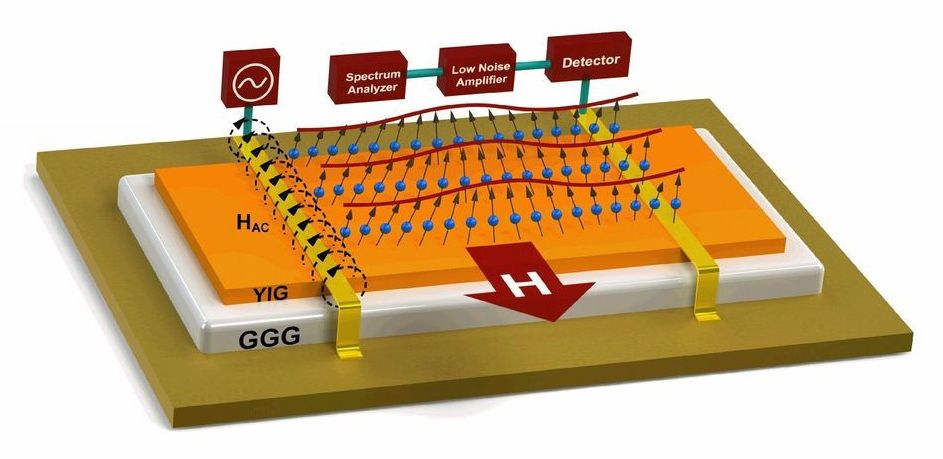We’ve seen autonomous aircraft doing everything from spraying crops to surveying wildlife, and now the Swiss air rescue organization Rega has announced a drone that’s capable of searching for and finding missing people all on its own.
Get the latest international news and world events from around the world.

Scientists detect the oldest type of molecule in the universe
Back in the ancient universe, shortly after the Big Bang, the first atoms formed out of free particles. Only light elements like hydrogen and helium could form at high temperatures, but as the universe cooled, those atoms turned into every single thing we see in our world today. And now, scientists have spotted the type of molecule that formed the very first time two atoms combined.
Theories have predicted for decades that the first molecule that could form would be between the first two elements: hydrogen and helium. But the “helium hydride” molecule, as it’s known, had never been spotted before, Gizmodo explained. This led to some doubt as to whether this theory could even be true. But thanks to a modified Boeing 747 dubbed SOFIA, or Stratospheric Observatory for Infrared Astronomy, we have finally detected the elusive molecule in a far-off nebula called NGC 7027.
Now that it’s confirmed that the universe is capable of forming the helium hydride molecule naturally, this knowledge is helping astronomers better understand how the universe worked in the time just after the Big Bang. The research, published on Wednesday in the journal Nature, has made sense of the “dawn of chemistry,” the authors state. Read more about this exciting find at Gizmodo. Shivani Ishwar.


An Interstellar Rock Like ‘Oumuamua May Have Hit Earth In 2014
Unusual Trajectory
The new research hasn’t yet been published, but it’s available on the preprint server ArXiv as of Monday. In it, Harvard astronomer Avi Loeb — the same dude who doubled down on the idea that ‘Oumuamua could be an alien spacecraft — suggests that a three-foot-wide interstellar meteor flew over Papa New Guinea’s Manus Island before crashing down.
Because of the meteor’s high speed and particular trajectory past Earth, Loeb and his student Amir Suraj suggest that it couldn’t have been bound in an orbit about the Sun. Rather, they argue, it might have come from somewhere beyond our solar system.


United States Strategic Command Photo
“To me, it’s very simple. If a rogue nation or other entity shoots an ICBM, inter-continental ballistic missile, at us, we intercept it.” — #USArmy Maj. Jason Brewer, Colorado National Guard #CombatReadyForce

Pig brains partially revived after death
US scientists have partially revived pig brains four hours after the animals were slaughtered.
The findings could fuel debate about the barrier between life and death, and provide a new way of researching diseases like Alzheimer’s.
The study showed the death of brain cells could be halted and that some connections in the brain were restored.

Magnonic devices can replace electronics without much noise
Electronic devices such as transistors are getting smaller and will soon hit the limits of conventional performance based on electrical currents.
Devices based on magnonic currents—quasi-particles associated with waves of magnetization, or spin waves, in certain magnetic materials—would transform the industry, though scientists need to better understand how to control them.
Engineers at the University of California, Riverside, have made an important step toward the development of practical magnonic devices by studying, for the first time, the level of noise associated with propagation of magnon current.

Researchers explore energy-saving catalysts that operate at room temperature
NIST researchers have explored in unprecedented detail a new breed of catalysts that allow some chemical reactions, which normally require high heat, to proceed at room temperature. The energy-saving catalysts use sunlight or another light source to excite localized surface plasmons (LSPs)—oscillations of groups of electrons on the surface of certain metal nanoparticles, such as gold, silver and aluminum. The energy derived from the LSP oscillations drives chemical reactions among molecules that adhere to the nanoparticles.
Scientists had previously shown that molecular hydrogen can be split into its individual atoms by the energy generated by the LSP oscillations. The NIST team has now discovered a second LSP-mediated reaction that proceeds at room temperature. In this reaction, LSPs excited in gold nanoparticles transform two molecules of carbon monoxide into carbon and carbon dioxide. The reaction, which ordinarily requires a minimum temperature of 400 degrees C., plays an important role in converting carbon monoxide into widely used carbon-based materials such as carbon nanotubes and graphite.
Probing the nanoparticles with an electron beam and combining the data with simulations, the NIST researchers pinpointed the sites on the gold nanoparticles where the reactions occurred. They also measured the intensity of the LSPs and mapped how the energy associated with the oscillations varied from place to place inside the nanoparticles. The measurements are key steps in understanding the role of LSPs for initiating reactions at room temperature, mitigating the need to heat the samples.

Researchers Just Demonstrated Nuclear Fusion in a Device Small Enough to Keep at Home
When it comes to the kinds of technology needed to contain a sun, there are currently just two horses in the race. Neither is what you’d call ‘petite’.
An earlier form of fusion technology that barely made it out of the starting blocks has just overcome a serious hurdle. It’s got a long way to catch up, but given its potential cost and versatility, a table-sized fusion device like this is worth watching out for.
While many have long given up on an early form of plasma confinement called the Z-pinch as a feasible way to generate power, researchers at the University of Washington in the US have continued to look for a way to overcome its shortcomings.